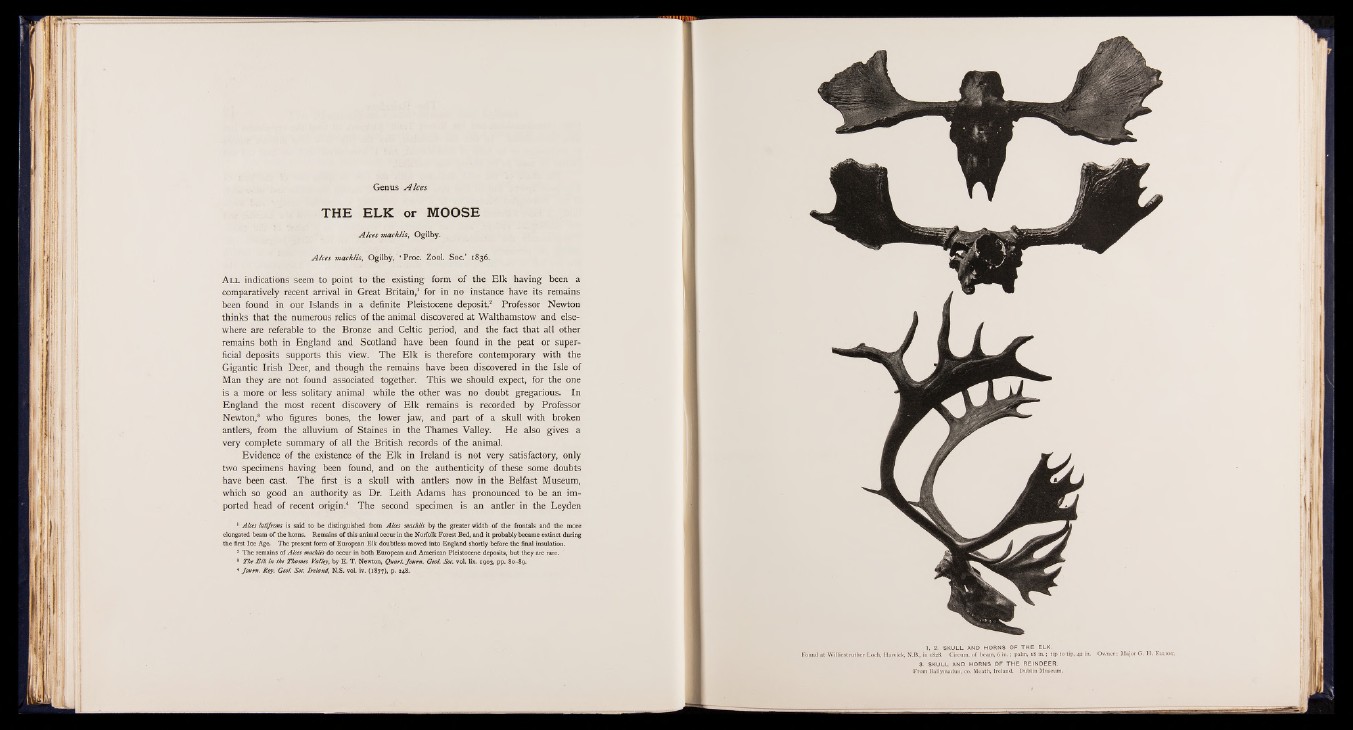
Genus A lees
THE ELK or MOOSE
A Ices m achlis, Ogilby.
A Ices machlis, Ogilby, ‘ Proc. Zool. Soc.’ 1836.
A ll indications seem to point to the existing form of the Elk having been a
comparatively recent arrival in Great Britain,1 for in no instance have its remains
been found in our Islands in a definite Pleistocene deposit.1 2 3 Professor Newton
thinks that the numerous relics of the animal discovered at Walthamstow and elsewhere
are referable to the Bronze and Celtic period, and the fact that all other
remains both in England and Scotland have been found in the peat or superficial
deposits supports this view. The Elk is therefore contemporary with the
Gigantic Irish Deer, and though the remains have been discovered in the Isle of
Man they are not found associated together. This we should expect, for the one
is a more or less solitary animal while the other was no doubt gregarious. In
England the most recent discovery of Elk remains is recorded by Professor
Newton,8 who figures bones, the lower jaw, and part of a skull with broken
antlers, from the alluvium of Staines in the Thames Valley. He also gives a
very complete summary of all the British records of the animal.
Evidence of the existence of the Elk in Ireland is not very satisfactory, only
two specimens having been found, and on the authenticity of these some doubts
have been cast. The first is a skull with antlers now in the Belfast Museum,
which so good an authority as Dr. Leith Adams has pronounced to be an imported
head of recent origin.4 The second specimen is an antler in the Leyden
1 A lets latifrons is said to be distinguished from Alces machlis by the greater width of the frontals and the more
elongated beam of the horns. Remains of this animal occur in the Norfolk Forest Bed, and it probably became extinct during
the first Ice Age. The present form of European Elk doubtless moved into England shortly before the final insulation.
* The remains of Alces machlis do occur in both European and American Pleistocene deposits, but they are rare.
3 The E lk in the Thames Valley, by E. T. Newton, Quart. Joum . Geol Soc. vol. lix. 1903, pp. 80-89.
4 Joum. Roy. Geol. Soc. Ireland, N.S. vol. iv. (1877), p. 248.